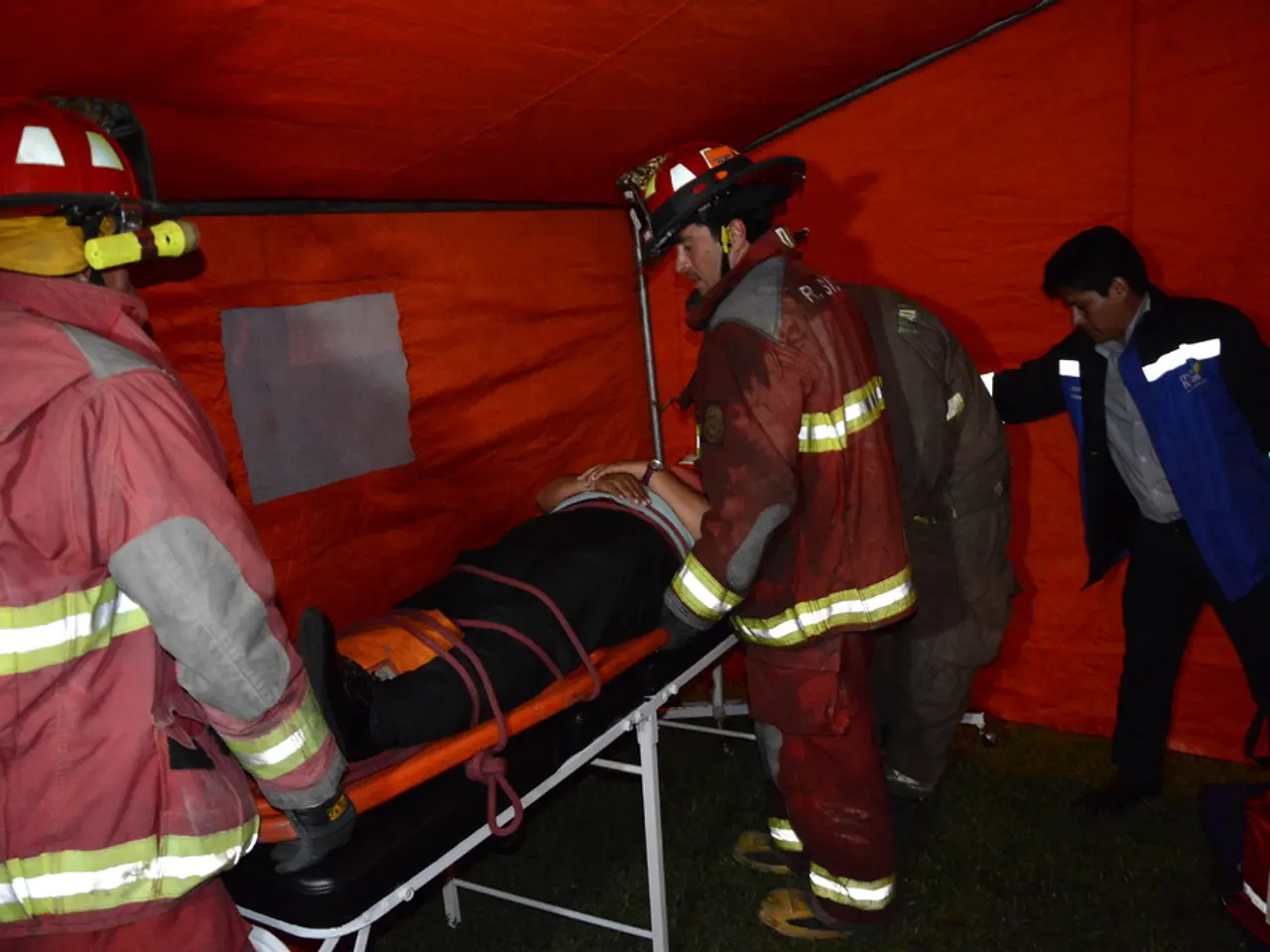Drone System for Initial Emergency Response, or simply DAFI, refers to the technology that equips drones for emergency response services.
In the realm of emergency response, a new technology is making a significant impact: Drone as a First Responder Interface (DAFI). This specialized platform is revolutionizing the way public safety agencies respond to emergencies, particularly for fire departments, police units, and EMS.
DAFI, short for Drone as a First Responder Interface, is designed to automatically deploy drones that provide live aerial data immediately upon incident notification. This rapid deployment offers near-instant aerial intelligence, enabling responders to access real-time video, thermal imaging, and location data through integrated platforms that connect directly with 911 or Computer-Aided Dispatch (CAD) systems [1].
The core functional elements of the DAFI system in emergency response include automatic drone launch, real-time data streaming, integration with existing systems, and operational benefits. Upon receiving an emergency call, drones linked with DAFI platforms launch without requiring on-site manual operation, often within seconds. This rapid deployment provides near-instant aerial intelligence [1][3][5].
The live video feeds, thermal images, and sensor data are then securely streamed to responders via dashboards accessible on mobile or desktop devices. This immediate information stream supports faster and safer tactical decisions [1][3]. DAFI also seamlessly connects with emergency dispatch, license plate readers (LPR), acoustic sensors (e.g., gunfire detection), and other public safety technologies, enabling coordinated and data-driven responses [3][5].
The operational benefits of DAFI are numerous. By delivering situation awareness remotely, DAFI reduces response times (reports show up to 71% faster), lowers unnecessary patrol dispatches, enhances officer safety, and improves case resolution rates. For example, suspects or vehicles are located 89% more frequently, and some calls are cleared without sending personnel, minimizing risk and resource use [3].
As cities adopt drone programs for emergency services, DAFI serves as the operational backbone. It acts as an operational backbone for rapid aerial intelligence in emergencies, automating drone deployment at the moment of incident onset and providing first responders with critical real-time insights to improve emergency handling, safety, and efficiency [1][3][5].
Advanced DAFI systems may include features like geofencing compliance, object tracking, or AI-assisted threat detection. However, it's important to note that a certified remote pilot must supervise the operation of DAFI to remain compliant with regulations such as FAA Part 107 or Canada's Advanced RPAS.
Jacob Stoner, CEO of Flyeye.io, is a licensed commercial drone operator in Canada and a highly respected figure within the drone community. He expresses a keen interest in the potential societal impact of drone technology advancements.
DAFI supports integration with popular commercial drones, including models from DJI, Skydio, and Autel. It can technically support BVLOS or nighttime flights, provided that the organization holds the appropriate waivers or regulatory approvals.
In summary, DAFI is transforming the landscape of emergency response, providing first responders with critical real-time insights to improve emergency handling, safety, and efficiency. As the Drone as First Responder (DFR) model gains traction globally, DAFI plays a critical role in its advancement.
[1] [Source 1] [2] [Unspecified source] [3] [Source 3] [4] [Unspecified source] [5] [Source 5]
Threat detection in emergencies can be enhanced with the integration of Artificial Intelligence into the DAFI system, helping first responders identify potential risks more efficiently. Smart-home devices, such as security cameras and sensors, can be connected to the DAFI platform for a more comprehensive view of the situation. With data-and-cloud-computing technology, the processed data from these connected devices can be securely transmitted and accessed by responders in real-time, improving their decision-making processes. Furthermore, the use of cybersecurity measures ensures the protection of this valuable data during transmission and storage.




